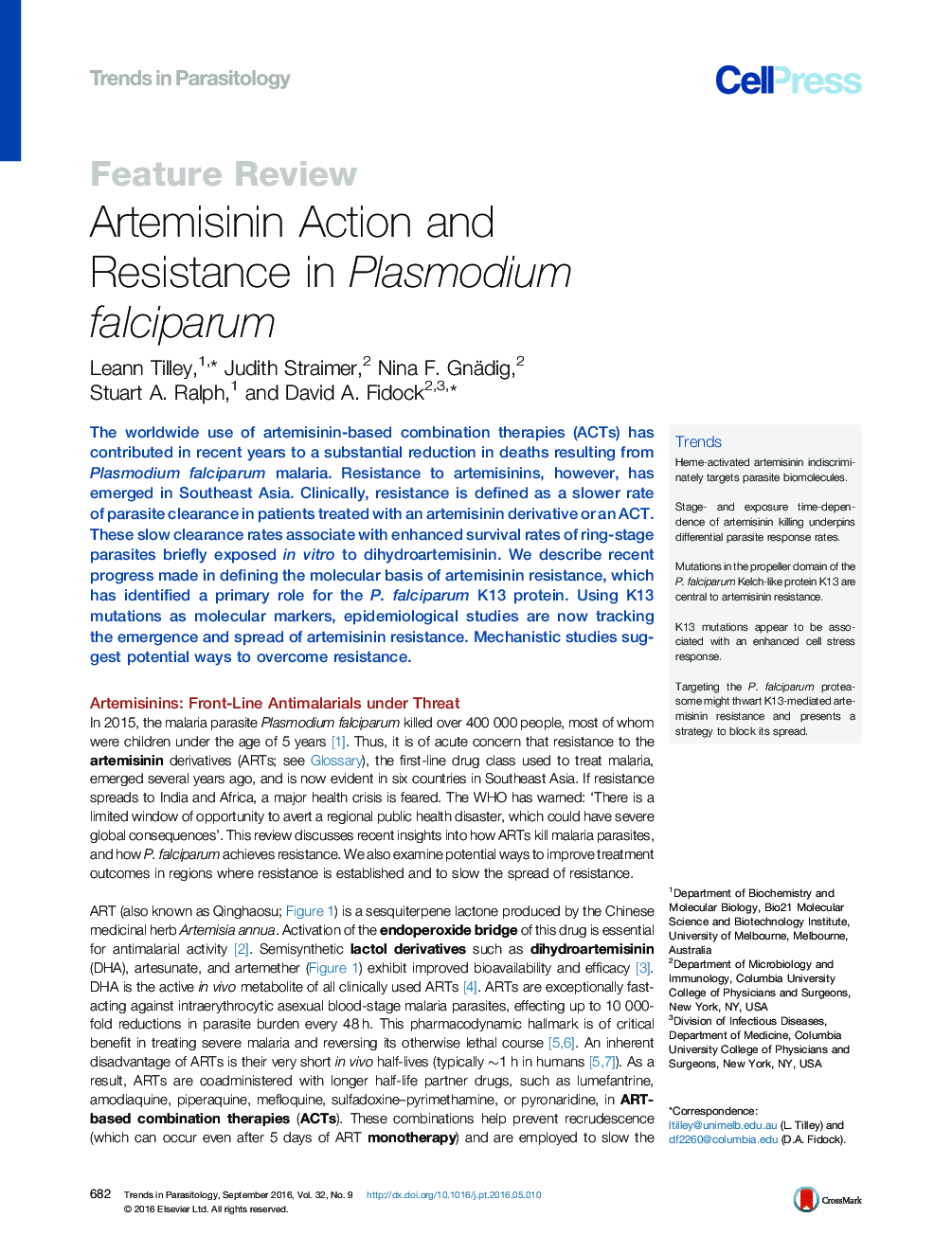| Article ID | Journal | Published Year | Pages | File Type |
|---|---|---|---|---|
| 3422866 | Trends in Parasitology | 2016 | 15 Pages |
The worldwide use of artemisinin-based combination therapies (ACTs) has contributed in recent years to a substantial reduction in deaths resulting from Plasmodium falciparum malaria. Resistance to artemisinins, however, has emerged in Southeast Asia. Clinically, resistance is defined as a slower rate of parasite clearance in patients treated with an artemisinin derivative or an ACT. These slow clearance rates associate with enhanced survival rates of ring-stage parasites briefly exposed in vitro to dihydroartemisinin. We describe recent progress made in defining the molecular basis of artemisinin resistance, which has identified a primary role for the P. falciparum K13 protein. Using K13 mutations as molecular markers, epidemiological studies are now tracking the emergence and spread of artemisinin resistance. Mechanistic studies suggest potential ways to overcome resistance.
TrendsHeme-activated artemisinin indiscriminately targets parasite biomolecules.Stage- and exposure time-dependence of artemisinin killing underpins differential parasite response rates.Mutations in the propeller domain of the P. falciparum Kelch-like protein K13 are central to artemisinin resistance.K13 mutations appear to be associated with an enhanced cell stress response.Targeting the P. falciparum proteasome might thwart K13-mediated artemisinin resistance and presents a strategy to block its spread.
